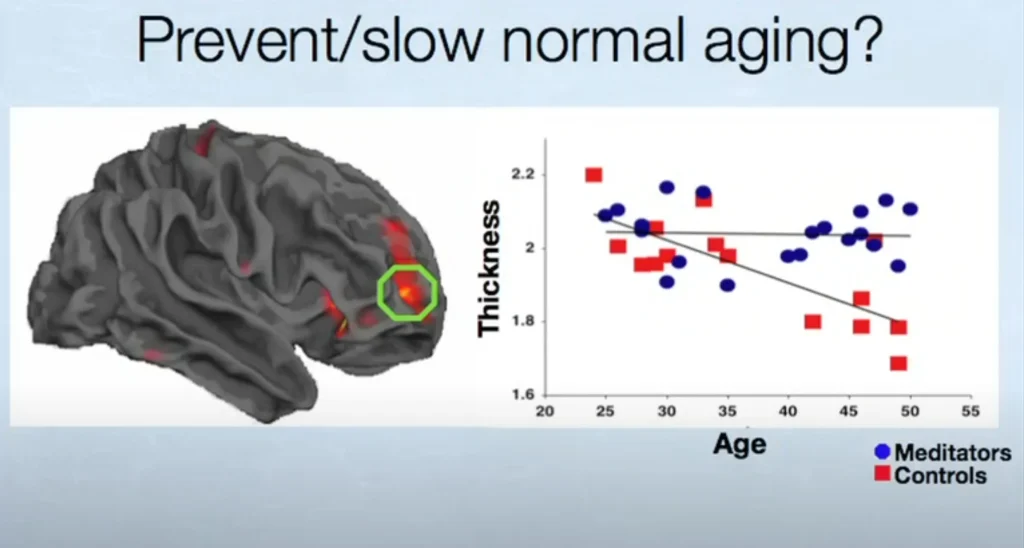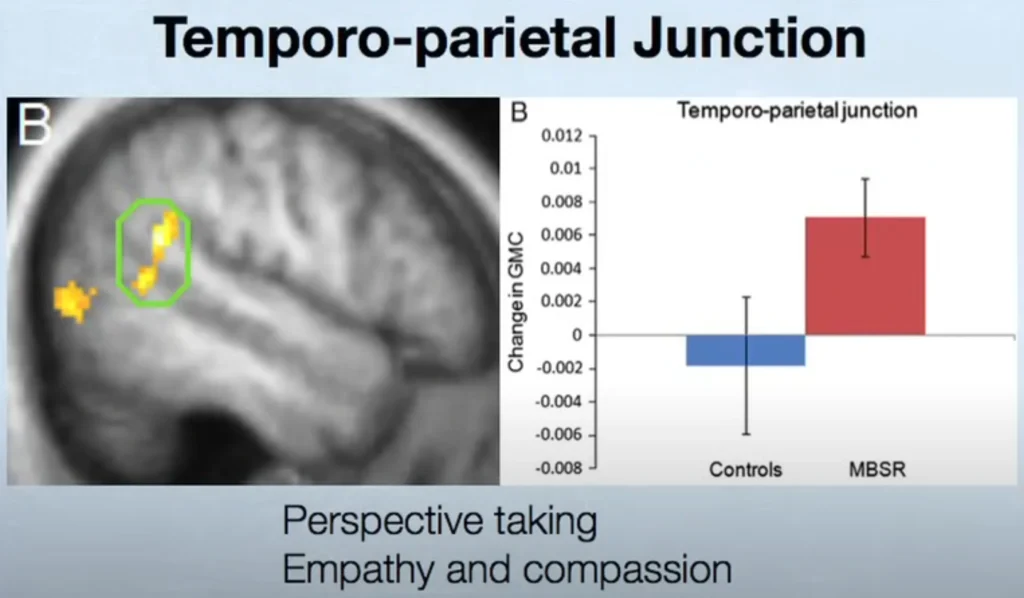For most people who have not been exposed to meditation, whenever meditation is mentioned, a question always comes to mind: is meditation real? Does meditation really work? Is meditation real or placebo? I don’t want to make overly subjective conclusions about this topic, but rather use TED Talk to talk to everyone about meditation
Meditation is not a new thing. In the distant East, it has been an important method of spiritual practice for thousands of years. Since the 1970s, it has also drifted to the United States and Europe, and in the past 20 years, it has become a secret that Silicon Valley and Wall Street elites do not easily tell others. So various speculations, studies, and commercialized products about meditation are gradually emerging. But people have always been unclear about the benefits of meditation for humans.

The academic community, especially experts in neurology, neuroscience, and biology, have begun to conduct various studies on meditation using modern methods. There are some astonishing discoveries. Today, I would like to share with you one of them, Dr. Sara Lazar, a neuroscientist at Harvard Medical School. She shared with us the story of how she became interested in meditation and conducted a series of studies to test whether meditation would have any effect on her.
At first, she wanted to do this research because her yoga teacher always said in class, “Yoga can make you calmer,” “increase your compassion,” “open your mind,” and so on, which sounded suspicious, ridiculous, and hard for her to believe. At first, yoga meditation was a stretching exercise that helped her repair leg and back injuries after running a marathon. But a few weeks later, when he personally felt some surprising changes, he developed a strong curiosity about meditation. Therefore, Dr. Sara Lazar, a neuroscientist at Harvard Medical School, decided to use her professional knowledge to conduct scientific and rigorous experiments to study the effects of yoga and meditation on the human brain. Finally, she concluded that “meditation can change your brain
At the end of the article, I will release the video link of this speech. Here, to summarize her research findings, Dr. Sara Lazar astonishingly discovered that both yoga and meditation have the following functions:
- Relieve mental and psychological stress.
- There are special therapeutic effects for certain diseases, such as depression, anxiety, insomnia, and pain caused by injuries.
- Improve the ability to focus and concentrate.
- Overall, the whole person will be happier.
In her speech, Dr. Sara Lazar mentioned an interesting medical term: Neuroplasticity, which means that our human brain is not always constant, but can be constantly shaped. When you repeatedly perform certain actions and behaviors, the brain changes the way neurons interact, resulting in physical changes, and the brain undergoes changes every three months.
Therefore, she decided to use meditation to test whether the brain would be altered by the repetitive action of “meditating every day for three consecutive months”.
Experiment 1:
Dr. Sara Lazar brought in a group of people with regular meditation habits and another group of people who had never meditated before for MRI examinations. She announced the following results:
1.Prefrontal Cortex (Memory & Decision-Making)

The first set of data is about memory and decision-making ability. As shown in the figure, people who have a habit of meditation have significantly more gray matter on their forehead compared to those who do not meditate. And gray matter in the brain is strongly associated with human memory and decision-making abilities, with more gray matter indicating better memory and decision-making abilities.
2.Age-Related Brain Atrophy:
The second set of data, shared with us by Dr. Sara Lazar, is about the issue of brain aging.The human brain gradually shrinks with age, so it is often found that as one gets older, their brain becomes dull and their memory deteriorates. But Sara’s research found that the cerebral cortex of a 50 year old meditator (circled in the picture – the frontal part responsible for memory) is actually the same thickness as that of a 25-year-old meditator.

The circled area in the picture is also a place that significantly shrinks when a person ages. Can this explain why many people used to wonder why people who practice yoga and meditation year-round look younger?
This result is very exciting, but many people also question whether meditation enthusiasts may be a strange group of people, and their brain structure may be different from others. Or perhaps due to the long-term vegetarian diet structure formed by most of them during their yoga practice, it has resulted in the uniqueness of their brain structure. In short, various skeptical voices forced Sara to start the second experiment.
Experiment 2:
This time, she chose people who had never had meditation experience before and arranged to meditate for three months, 30-40 minutes a day, and then scanned their brains through MRI for comparison.
The result is as follows:
1.Hippocampus (Learning & Emotional Regulation)
The thickness of the hippocampus region in the meditator’s brain (represented by the red column in the figure below) is much thicker than that of an ordinary person (represented by the blue column in the figure).

As is well known, the hippocampus is an important area of the brain for learning ability and emotional control. People with depression and other brain traumas often have this area thinner than normal individuals. The initial manifestation of depression is indeed a sad experience in life, which hits people’s emotions and makes them feel depressed and uninterested in anything all day long. Over time, this repetitive low mood behavior will alter the structure of the brain, resulting in less gray matter in the hippocampus compared to normal individuals.
This experimental result also indirectly explains why meditation is often used as an effective adjunctive treatment for depression. To some extent, this is also the theoretical basis for meditation therapy for depression.
2.Temporo-Parietal Junction (Empathy & Compassion)
Subsequently, Dr. Sara Lazar tested the Temporal personal junction area located above the ear, which is associated with emotions and governs compassion, empathy, and expression of opinions.

The data displayed on the red column on the right (meditation group) is also significantly higher than that on the blue column on the left (normal group). In addition, she also found the same data differences in people who have been practicing yoga for a long time. This indicates. People who practice yoga and meditation for a long time can have better compassion and empathy towards their peers and those around them, which is known as higher emotional intelligence than others.
3.Amygdala (Stress Response):
Amygdala: The amygdala governs a person’s ability to decide whether to enter a “combat state” or “leave” (stress response) when faced with a situation.

Interestingly, the gray matter in the amygdala of the meditation group was reduced compared to the general population. This means that when faced with emergencies, people with a habit of meditation have a smaller and slower response in the cerebral cortex compared to the general population. That is to say, the meditation group tends to have smaller emotional reactions to events and higher stress resistance.
No matter how much debate there is, it is not as convincing as scientific experiments and data. What are your views on whether meditation is a scam? Welcome everyone to discuss.
In fact, our understanding of our own brain is still less than 5%, and we often feel that we already know so much about the external world, not only Earth but also outer space. Especially in the 500 years since industrialization, the world has undergone earth shattering changes in the hands of us humans. Compared to that, we are so ignorant of ourselves. Many human diseases still need to be conquered, and there are many phenomena and events in one’s body that cannot be explained clearly.
Fortunately, we have been constantly making various efforts.
Struggling to turn theory into practice? Click here,Start Your Free Audio-Guided Meditation Now!





